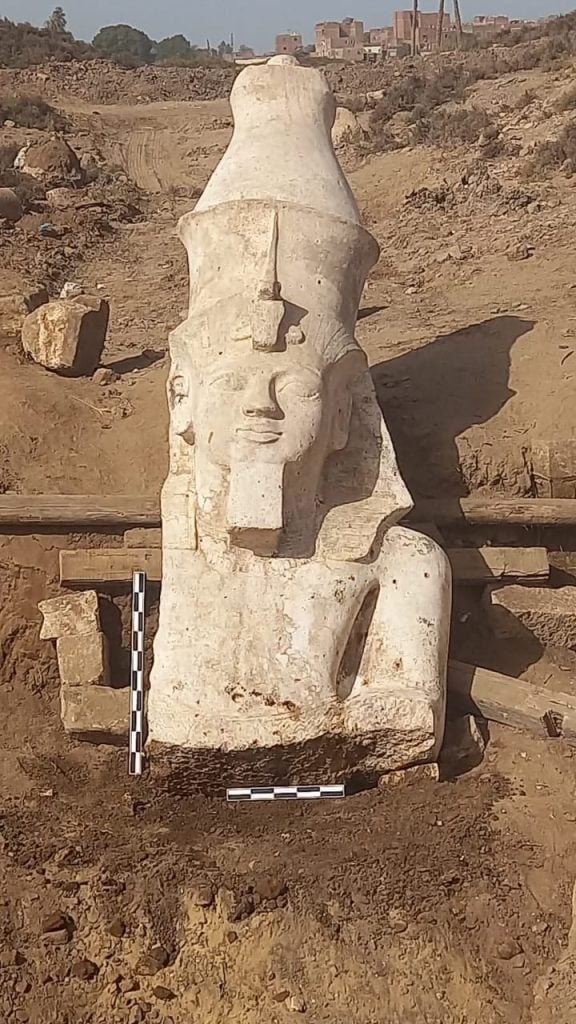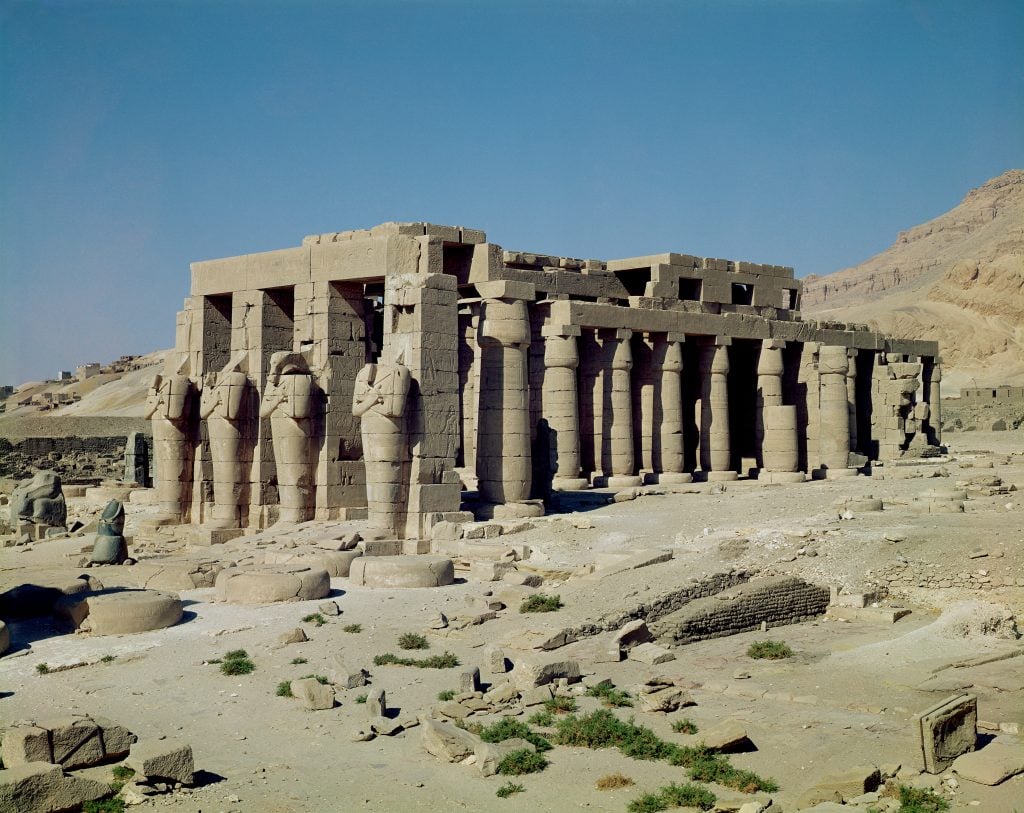Archaeology & History
The Missing Half of a Colossal Ramses II Statue Has Been Found
The other half of the statue was discovered in the same area almost a century ago.

The missing upper half of a statue of King Ramses II has finally been discovered in the south of Egypt. The excavation was organized by a joint Egyptian-American archaeological mission between the local Ministry of Tourism and Antiquities, and the University of Colorado.
At over 12 feet tall, the unearthed section depicts the ancient pharaoh’s head, shoulders, and upper torso. Ramses II is portrayed wearing the pschent, a double crown indicating his dominion over all Egyptian land, typically found adorning the heads of ancient Egyptian rulers. He also dons a cobra headdress, known as a uraeus, a sacred symbol of royalty and supreme power associated with the ancient goddess Wadjet.
The lower half of the statue was discovered by German archaeologists in the same area, the southern city of Minya, almost a century ago in 1930. Efforts are underway to clean and reconstitute the entire limestone sculpture, which is expected to result in a massive 23-foot tall structure upon completion.
A number of sites in Egypt house statues of Ramses II, ancient Egypt’s longest-reigning king. At the twin temples of Abu Simbel, in Egypt’s southernmost province of Aswan, four colossal 65-foot-tall statues of Ramses II flank the main entrance to the Greater Temple. The statues were the subject of international attention in the 1960s when an operation was undertaken to move the entire temple complex to higher ground. The area was under threat of being submerged by Lake Naseer, a then-new reservoir lake of the High Aswan Dam on the Nile River.

Ramesseum, the memorial temple of Ramses II, located in the Theban Necropolis in Upper Egypt. Photo: Art Images via Getty Images.
Ramses II, commonly known as Ramses the Great, ruled Egypt from 1298 to 1235 B.C.E. He is considered the most powerful and celebrated pharaoh of the New Kingdom, itself the golden age of ancient Egypt. During his reign, he executed an extensive building program, constructing cities and monuments throughout his territories, which included Egypt and Nubia. The latter was an important source of raw materials such as gold and other trade goods. Constructed 1,500 years after the pyramids, his mammoth temples were built as a symbol of his power, and also as a means of Egyptianizing the Nubians.
There exist at least 350 statues depicting the great pharaoh. Some were made using the same methods as impatient kings who came before him: by taking a chisel to a pre-existing monument and replacing a previous pharaoh’s name with his own, or similarly editing the visage of a statue to resemble his likeness.
His sarcophagus is regarded as one of the most striking royal coffins of his time. Ramses’s mummy is on display at the National Museum of Egyptian Civilization in Cairo.





